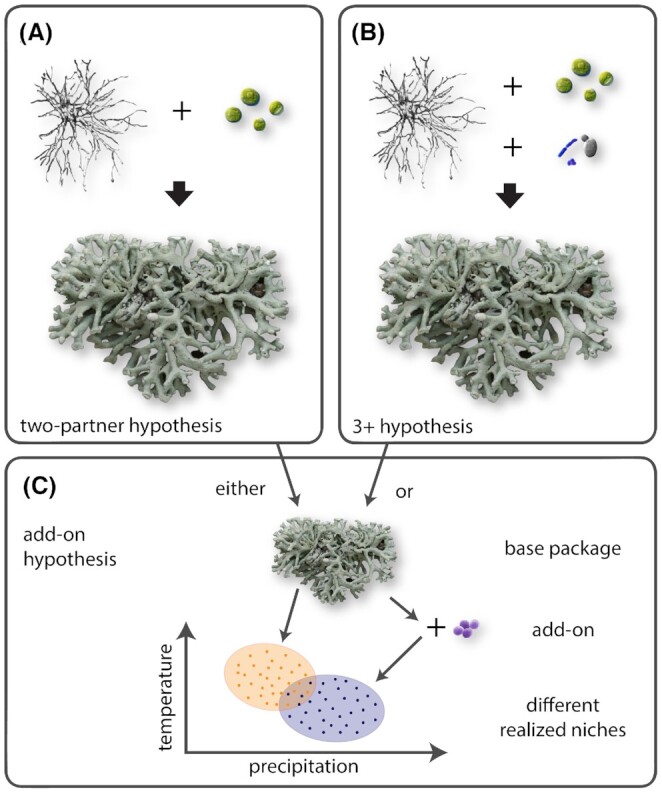Figure 4.

Theoretical models of lichen symbioses. Note that because lichen symbioses are highly polyphyletic along the evolutionary trees of each of their symbionts, and no a priori constraints exist for number of symbionts, no single model is likely to fit for all symbioses. (A) The traditional ‘two-partner’ hypothesis still widely espoused in lichen research holds that a fully formed, complete lichen thallus is achieved by fungus and photosymbiont alone; (B) the ‘3+ hypothesis’ proposes that a fully formed, complete lichen thallus will not be achieved without the fungus and photosymbiont as well as one or more additional UNPOs; and (C) the ‘add-on’ hypothesis proposes that either A or B could be used to achieve a ‘base package’, but that other UNPOs may facultatively join to form an additional, new, stable lichen symbiosis, sufficiently influencing the symbiotic outcome such that the realized niche and perhaps phenotype are altered. Photo credit Tim Wheeler.
